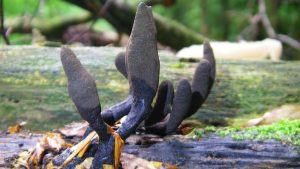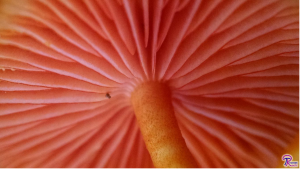#055: The Old Man of the Woods, Strobilomyces floccopus
This bolete is easily distinguished by the prominent tufts of black “hair” that cover the otherwise greyish cap and stipe. Despite the old man imagery, floccopus is probably one of the most beautiful mushrooms. It at least deserves to be counted among the best dressed mushrooms due to its showy scales. The scales are the most striking feature of the Old Man of the Woods. They are soft, black, and wooly, which makes them stand out from the whitish to grayish pileus. The wooly fibers are long and often hang over the edge of the convex pileus, giving the mushroom an unkempt appearance. On top of that, the cap’s margin often sports the remnants of a whitish to grayish partial veil. The stipe is similarly covered with dense, black fibers, which obscure the whitish to grayish color of the stipe surface. When you flip the mushroom over, you will notice...







![#011: Characteristics of Kingdom Fungi [Archived]](https://www.fungusfactfriday.com/wp-content/themes/hueman/assets/front/img/thumb-small-empty.png)


